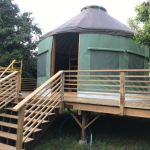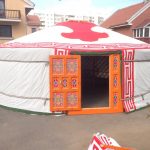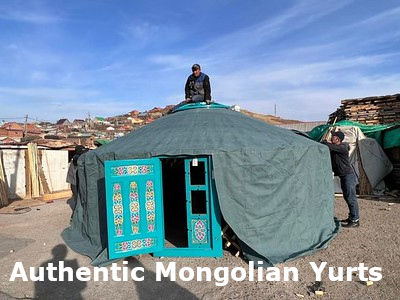Introduction: The World of Yurts
If you're exploring alternative housing options, you may find yourself asking, "What are yurts?" This unique type of dwelling, often classified under the umbrella term of "tiny houses," has gained popularity in recent years. However, yurts aren't a new invention; in fact, they have a rich history stretching back thousands of years. Read here for frequently asked Yurt related questions.
The Origin and Traditional Use of Yurts
Yurts have their roots in Central Asia, where nomadic tribes developed these portable dwellings to meet their lifestyle needs. Traditional yurts, also known as Gers in Mongolia, are circular structures made from a wooden lattice framework and covered with animal skins or wool felt for insulation. Despite their seeming simplicity, yurts are a marvel of ancient engineering - lightweight for travel, yet sturdy against the elements.
Modern Yurts: An Evolution of Design
Modern yurts have evolved from their traditional counterparts to adapt to contemporary needs. The key principle - a circular dwelling with a lightweight, durable structure - remains the same. However, there are some notable differences. Instead of animal skins or wool, modern yurts typically feature waterproof vinyl fabric for the roof and walls. The framework, while still a wooden lattice, is usually crafted from specific types of lumber for enhanced durability. This allows modern yurts to scale up to larger sizes, offering more living space.
Why Choose a Yurt?
The rise in popularity of yurts in recent years is not without reason. These structures, both traditional and modern, offer an array of benefits that make them an appealing choice for many. Yurts provide an affordable housing alternative, especially when compared to the cost of traditional homes. They're eco-friendly, often built from sustainable materials and requiring less energy for heating and cooling due to their efficient design. Furthermore, yurts are versatile - they can be used as primary residences, holiday homes, studios, guest houses, and more.
Building Your Own Yurt: A Feasible DIY Project?
The concept of building a yurt might seem daunting at first, particularly given the scale of the project and the precision needed for the vinyl crafting involved. However, there are numerous resources available today that make this a viable DIY project for those inclined. That said, it's crucial to understand that building a yurt is not your average DIY task. It requires careful planning, a fair understanding of the construction process, and access to the right tools and materials.
Purchasing a Yurt: What to Consider
When it comes to buying a yurt, whether new or used, there are several factors to consider. The cost is one, of course, but also the size, the materials used, the manufacturer's reputation, and the intended use of the yurt. It's essential to research thoroughly before making a purchase. Online platforms, like ours, provide a wide range of yurts to choose from and offer comprehensive information to help you make an informed decision.
Is Yurt Living Right for You?
While yurts offer numerous benefits, they may not be the ideal solution for everyone. Yurt living often means embracing a minimalist lifestyle, given the compact nature of these dwellings. Additionally, depending on where you live, there might be zoning regulations or building codes to consider. It's advisable to review these factors and weigh them against your lifestyle needs and expectations before deciding if a yurt is the right choice for you.
The Cultural Significance of Yurts
Beyond their functional use, yurts also hold cultural significance, particularly in countries like Mongolia, where they've been an integral part of nomadic life for centuries. Even in their modern form, yurts often retain traditional elements that pay homage to their rich heritage. This blend of the old and the new is part of what makes yurts so unique and appealing to many.
Exploring the Variety of Yurts
One of the exciting aspects of yurts is the variety available. From the traditional Mongolian Ger to the modern vinyl yurt, there's a wide range of styles to suit different tastes and needs. Some yurts remain true to their nomadic roots, featuring portable designs and rustic interiors, while others are more permanent structures with all the comforts of a modern home.
Conclusion: Embracing the Yurt Lifestyle
In conclusion, yurts represent a unique blend of traditional craftsmanship and modern innovation. These structures offer a viable solution for those seeking an affordable, eco-friendly, and versatile housing option. Whether you're considering building your own yurt or purchasing one, understanding what yurts are and what they offer is the first step in embracing this alternative lifestyle. The journey of exploring yurts is one that can lead you to discover not just a new type of dwelling, but also a new way of life. It's about more than just finding shelter; it's about embracing simplicity, connectivity with nature, and a sense of community that's often inherent in yurt living. As with any significant decision, it's crucial to do your research and consider your specific needs and circumstances. And remember, whether it's a traditional Mongolian Ger or a modern yurt, these unique structures are more than just a trend. They're a testament to a timeless architectural design that has stood the test of time, proving that yurts are here to stay.









